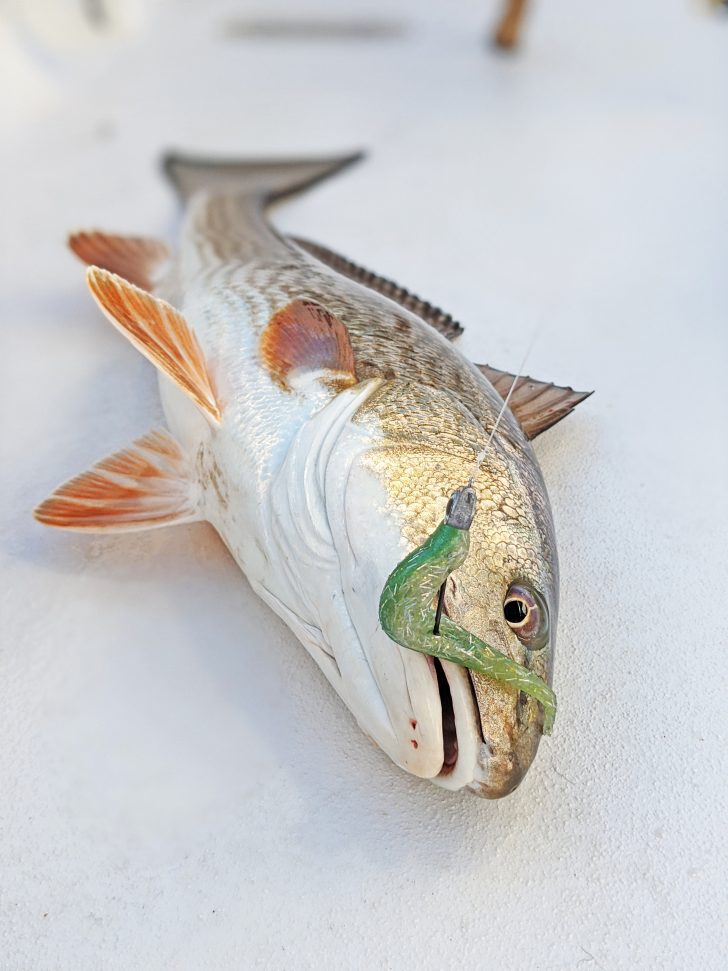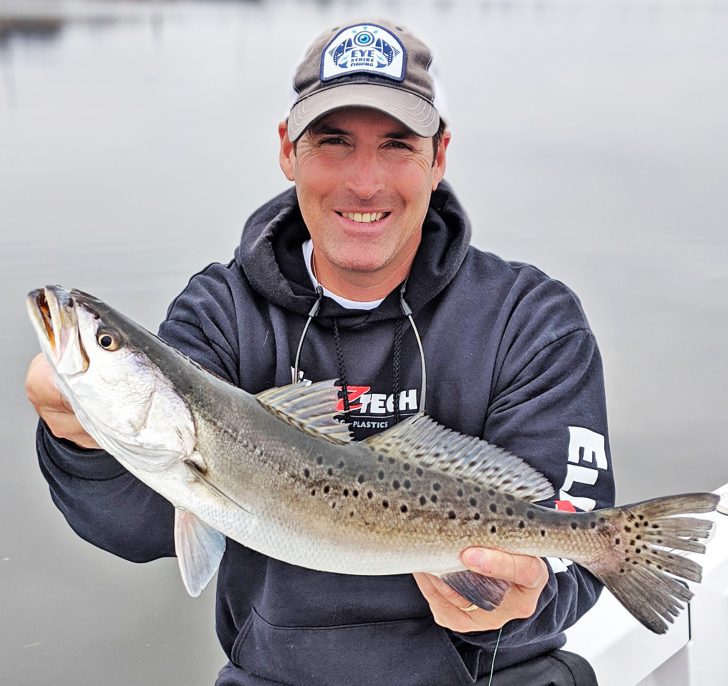As the title of this column suggests, I’ll be writing about the art of deceiving a fish into believing a piece of plastic and metal is something to eat.
A bit of an introduction first. I started saltwater fishing in 2006 and started in the way probably many of you did.
I was invited by a friend trout fishing in the Fall and thus began an obsession that is now a large part of my life.
I’ve been very fortunate to stand on some high-profile shoulders and learn from the best.
Most notably my business partner Ralph Phillips. Another mentor is Bob Sanders of Trout Trick fame.
If you know Ralph you’ve probably heard him needle you a bit if you caught a fish on shrimp or bait.
A few years ago I decided to fish artificial lures exclusively
To Ralph, if you didn’t catch it on artificial bait, it doesn’t count!
Not surprisingly, a few years ago I decided to fish artificial lures exclusively.
Knowing my catching was going to suffer for a while until I figured it out.
Countless times I would be standing by as Ralph wore me out using the same tackle, in the same hole.
Slowly but surely and with a lot of work, I began to understand why. My goal with this article is to pay it forward.
Not having a strong fishing pedigree and learning the same as anyone else I hope will make my column relatable.
If I can do it, you can too. Being an engineer, I’m a pretty analytical guy.
I’m going to interpret what I’ve learned along with personal experience and try to help you become better at fooling them too.
There are a lot of benefits to catching fish on artificial lures.
The single most important thing a new artificial lure fisherman must master is line management
One of which is not needing to net bait or visit the tackle shop for minnows or shrimp.
Once you have felt the subtle tick of a big trout on a jerk bait you will find it’s an addiction that will last the rest of your life.
In my opinion, the single most important thing a new artificial lure fisherman must master is line management.
It’s the reason one fisherman may have a banner day, while the other gets the dreaded skunk, even if fishing the same lure and fishing where the fish are.
Pretty much every fish is going to hit a lure on the fall, in other words, when the lure is dropping toward the bottom.
The thing most people do wrong is drop their rod tip after jigging a lure up. This causes a bow in the line and dampens the sometimes very subtle bump of a fish.
Most people will never feel the bite if they do this. Its imperative that you keep in semi-contact with your lure by minimizing bow in your line.
This is done by jigging the lure up, then keeping the rod tip high – only lowering it slowly as you slowly reel in a very small amount of line as the lure falls.
It takes practice, but I promise you that you will feel many, many more bites than you ever did before if you follow this simple advice.
Its one thing to fool a fish into biting plastic, but it usually won’t be long until it spits the lure back out, realizing the mistake it just made.
Make sure you set the hook after feeling that bite by simply raising your rod tip and holding it there until you feel some head shakes.
Try it and be sure to let us know how it works for you!
David Fladd
Partner, Eye Strike Fishing
dfladd@eyestrikefishing.com
eyestrikefishing.com




